Official Races & Homebrew Addons
Races

Humans are the most adaptable and ambitious people among the common races. Whatever drives them, humans are the innovators, the achievers, and the pioneers of the worlds.
Human
Humans were widespread, could be found in most regions and, in general, were fierce and disagreeable, which could sometimes lead certain other races to view them with contempt. They were renowned for their diversity and ambition, and although they lacked specialization, they could excel in many areas.
While there were no natural human subraces, planetouched subspecies of humans were found in the Realms. These included the aasimars, genasi, and tieflings. There was also great ethnic diversity between humans in different regions.
Humans bred outside their race many times, resulting in the various half-human races like half-elves and half-orcs.

Elves are a magical people of otherworldly grace, living in places of ethereal beauty, in the midst of ancient forests or in silvery spires glittering with faerie light, where soft music drifts through the air and gentle fragrances waft on the breeze. Elves love nature and magic, art and artistry, music and poetry.
Elf
With their unearthly grace and fine features, elves appear hauntingly beautiful to humans and members of many other races. They are slightly shorter than humans on average.
Elves can live well over 700 years, giving them a broad perspective on events that might trouble the shorter-lived races more deeply. They are more often amused than excited, and more likely to be curious than greedy. They tend to remain aloof and unfazed by petty happenstance. When pursuing a goal, however, whether adventuring on a mission or learning a new skill or art, elves can be focused and relentless. They are slow to make friends and enemies, and even slower to forget them. They reply to petty insults with disdain and to serious insults with vengeance.
Most elves dwell in small forest villages hidden among the trees. Elves hunt game, gather food, and grow vegetables, and their skill and magic allow them to support themselves without the need for clearing and plowing land. They are talented artisans, crafting finely worked clothes and art objects. Their contact with outsiders is usually limited.
Elves take up adventuring out of wanderlust. Since they are so long-lived, they can enjoy centuries of exploration and discovery. They dislike the pace of human society, which is regimented from day to day but constantly changing over decades, so they find careers that let them travel freely and set their own pace.
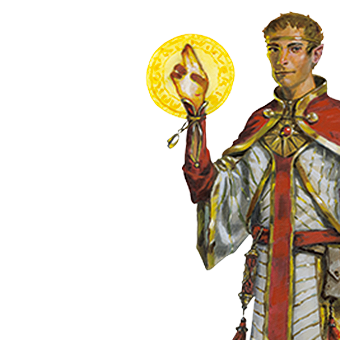
Half-elves combine what some say are the best qualities of their elf and human parents. They are the offspring of humans and elves.
Half-Elf
Half-elves inherit a blend of of physical traits from their human and elven ancestors, and they are typically good-looking. Elves consider half-elves to resemble humans and sometimes call them "half-humans", while humans consider them to resemble elves. Male half-elves are distinguished from their elven ancestors by the ability to grow facial hair. Half-elves can inherit facial features and hair, eye and skin color of either parent, though it is common for them to inherit their eyes from the elven parent.
Half-elves are uncommon in most worlds, where humans and elves tend to live apart. Half-elves prefer the company of half-elves, but typically integrate into human societies and have no distinct kingdoms of their own. Many half-elves take up life as a wanderer, feeling that they do not truly fit into either human or elven culture, and often outliving human companions.
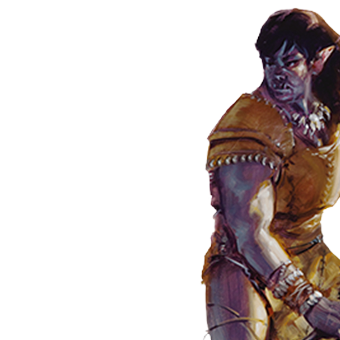
Half-orcs' grayish pigmentation, sloping foreheads, jutting jaws, prominent teeth, and towering builds make their orcish heritage plain for all to see.
Half-Orc
Whether united under the leadership of a mighty warlock or having fought to a standstill after years of conflict, orc and human tribes sometimes form alliances, joining forces into a larger horde to the terror of civilized lands nearby. When these alliances are sealed by marriages, half-orcs are born. Half-orcs' grayish pigmentation, sloping foreheads, jutting jaws, prominent teeth, and towering builds make their orcish heritage plain for all to see.
The dark-red goddess Fexyiaf created the orcs, and even those orcs who turn away from her worship can't fully escape her influence. The same is true of half-orcs, though their human blood moderates the impact of their orcish heritage. Some half-orcs hear the whispers of Fexyiaf in their dreams, calling them to unleash the rage that simmers within them.
Half-orcs most often live among orcs. Of the other races, humans are most likely to accept half-orcs, and half-orcs almost always live in human lands when not living among orc tribes.
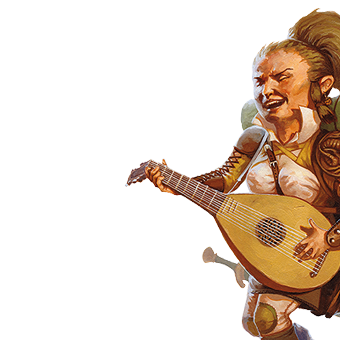
The diminutive halflings survive in a world full of larger creatures by avoiding notice or, barring that, avoiding offense.
Halfling
Known as Hin amongst themselves or the "good folk", the "quick folk" and the "sly folk" amongst other races were humanoid creatures similar in shape to humans -whom halflings called the "Big Folk", or "Manyhanded" - but around half their size. Halflings got along well with most of the other races and were known for their curiosity and tendency to collect things.
Standing somewhere around 81-100 cm tall and weighing on average between 15kg, halflings are small compared to most other races. Most halflings had dark hair and eyes and nearly all male halflings were incapable of growing true beards, though many had long sideburns.
Halflings were by nature joyful and friendly in their dealings with others. Halflings appeared deceptively harmless, meaning they were often beyond the notice of enemies that might otherwise pose a threat to them. The halfling mind was practical and halflings concerned themselves with their immediate surroundings. They took pleasure in simple things, with few aspiring to greatness in the same manner as humans.
While many halflings did not have the ambition for adventure that some races did, most preferred trouble to boredom. Unfortunately, the small size of halflings have an effect on their abilities. Halflings were, for instance, incapable of wielding larger weapons like greatswords or halberds.
Halfling communities were tightly knit groups found around the world, usually near the settlements of other races. Most halflings didn't recognize the claims of kings or nobles as sovereign rulers but instead looked primarily to their family elders to guide them. Halflings also valued a sense of community; halflings naming each other "halfling" was a salute of brotherhood.
Halfling culture had a fondness for stories and legends and was rich in the oral tradition. So much care was put into the retelling of traditional stories and their preservation that halflings often unwittingly had access to lore about ancient and long-gone cultures or empires that others had long since forgotten about.
Most halflings, didn't live in communities of their own but instead regions dominated by other races. This was particularly true in human societies, which attracted halflings because of the comparative rapidity with which they changed. It should be noted that halflings usually found insults directed at them to be amusing rather than insulting.
The halfling race had many traditional homelands, though as a whole the race was typically nomadic. Over time, Halflings became more displaced than before, though as a result they also came together in unity even more tightly than they were before. Though formerly met with prejudice, halflings earned acceptance through their skill as merchants and business partners even though they were around as the same time as dwarves, elves, and giants.
The hin generally avoided realms where slavery was prevalent or those where exploitation of their kind was socially acceptable.
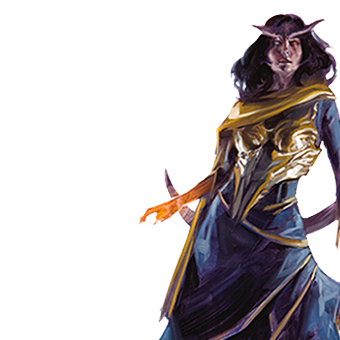
To be greeted with stares and whispers, to suffer violence and insult on the street, to see mistrust and fear in every eye: this is the lot of the tiefling.
Tiefling
Tieflings were human-based planetouched, native outsiders that were infused with the touch of the fiendish planes, most often through descent from fiends, demons, Yugoloths, devils, evil deities, and others who had bred with humans. Although their evil ancestors could be many generations removed, the taint lingered. The celestial counterparts of tieflings were called aasimar.
Tieflings tended to have an unsettling air about them, and most people were uncomfortable around them, whether they were aware of the tiefling's unsavory ancestry or not. While some looked like normal humans, most retained physical characteristics derived from their ancestor, with the most common such features being horns, prehensile tails, and pointed teeth. Some tieflings also had eyes that were solid orbs of black, red, white, silver, or gold, while others had eyes more similar to those of humans. Tieflings who had strikingly inhuman features were often killed at birth by their horrified parents or others.
Some tieflings were not descended from mere fiends at all, but from powerful gods. These tieflings often had their own physical characteristics that set them apart. Many centuries ago, Tieflings sired by Uke, for instance, often had antlers instead of horns and pale, white hair.
Most tieflings were aware from an early age that they were different from others around them, and were given to strange urges and desires because of their unusual ancestry. Few tieflings were raised with the love a normal human child might expect to receive and this shaped most of the race into bitter individuals who expected eventual rejection from all whom they meet. While some would follow this path towards evil, others rejected it wholeheartedly and sought to make a good impact on the world around them, sometimes becoming the most heroic characters of all. Few could maintain this discipline however, and most tieflings fell somewhere between both extremes. Because tieflings were generally distrusted throughout the world, owing to their fiendish heritage, many were themselves distrusting and self-reliant.
Tieflings were talented warriors. In melee combat they were agile and quick on their feet. They preferred to use weapons that combined sharpness with speed. Those tieflings who sought power through arcane magic were most often warlocks. Tiefling arcane spellcasters of all kinds, however, felt a draw towards the fiendish energies of the planes and tiefling wizards commonly specialized as diviners for the purposes of seeking knowledge of the Lower Planes or as conjurers so that they might summon the dark spirits whom they called kin.
Like other races that were the result of the breeding of two or more others, tieflings had no true culture they could call their own. Regardless of their motivations, tieflings often distrusted one another, sometimes even casting the same preconceptions on one another that others did on them. In spite of this, many secretly desired to have another tiefling nearby, if only to experience some small kind of kinship. Animosity that tieflings had for others was taken to its extreme in the case of aasimar, whom tieflings instinctively feared or loathed.
Those tieflings who were religious were a varied lot, since no god held more sway over tieflings than any other, though Pwazo, as the lord over the fiendish race of devils, may come close.
Tieflings were not strictly carnivores. They consumed blood, blubber, bone, gristle and meat. They even roasted insects and considered raw bone marrow a delicacy.
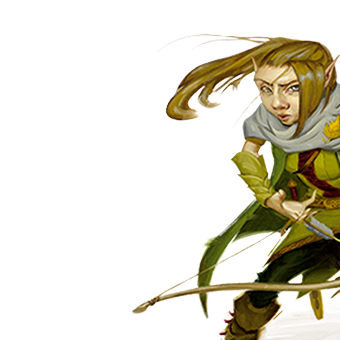
A gnome's energy and enthusiasm for living shines through every inch of his or her tiny body.
Gnome
Gnomes take delight in life, enjoying every moment of invention, exploration, investigation, creation, and play. A gnome's energy and enthusiasm for living shines through every inch of his or her tiny body. Gnomes average slightly over 120cm tall and weigh 20kgs. Their tan or brown faces are usually adorned with broad smiles, beneath their prodigious noses, and their bright eyes shine with excitement. Their fair hair has a tendency to stick out in every direction, as if expressing the gnome's insatiable interest in everything around. As far as gnomes are concerned, being alive is a wonderful thing, and they squeeze every ounce of enjoyment out of their three to five centuries of life.
Though gnomes love jokes of all kinds, particularly puns and pranks, they're just as dedicated to the more serious tasks they undertake. Many gnomes are skilled engineers, alchemists, tinkers, and inventors. They're willing to make mistakes and laugh at themselves in the process of perfecting what they do. Gnomes speak as if they can't get the thoughts out of their heads fast enough. Even as they offer ideas and opinions on a range of subjects, they still manage to listen carefully to others, adding the appropriate exclamations of surprise and appreciation along the way.
Gnomes make their homes in hilly, wooded lands. They live underground but get more fresh air than dwarves do, enjoying the natural, living world on the surface whenever they can. Their homes are well hidden by both clever construction and simple illusions. Gnomes who settle in human lands are commonly gemcutters, engineers, sages, or tinkers. Some human families retain gnome tutors, ensuring that their pupils enjoy a mix of serious learning and delighted enjoyment. A gnome might tutor several generations of a single human family over the course of his or her long life.
Curious and impulsive, gnomes might take up adventuring as a way to see the world or for the love of exploring. As lovers of gems and other fine items, some gnomes take to adventuring as a quick, if dangerous, path to wealth. It's rare for a gnome to be hostile or malicious unless he or she has suffered a grievous injury. Gnomes know that most races don't share their sense of humor, but they enjoy anyone's company just as they enjoy everything else they set out to do.
Gnomes love names, and most have half a dozen or so. A gnome's mother, father, clan elder, aunts, and uncles each give the gnome a name, and various nicknames from just about everyone else might or might not stick over time. Gnome names are typically variants on the names of ancestors or distant relatives, though some are purely new inventions.
They mate with their race, and usually believe in Wugw, Gaayjx, Megm, Veri, Uke and Lcaoc depending on their personality and society.
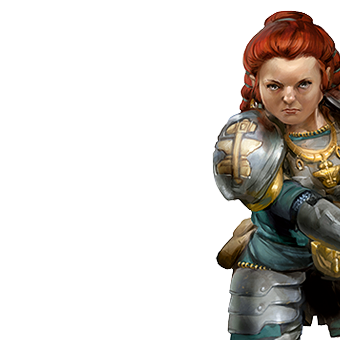
Bold and hardy, dwarves are known as skilled warriors, miners, and workers of stone and metal.
Dwarf
Kingdoms rich in ancient grandeur, halls carved into the roots of mountains, the echoing of picks and hammers in deep mines and blazing forges, a commitment to clan and tradition, and a burning hatred of goblins and orcs... These common threads unite all dwarves.
Bold and hardy, dwarves are known as skilled warriors, miners, and workers of stone and metal. Even though they are short, dwarves are so broad and compact that they can weigh as much as a human standing nearly two feet taller. Their courage and endurance are also easily a match for any of the larger folk.
Dwarves can live to be more than 400 years old, so the oldest living dwarves often remember a very different world. This longevity grants them a perspective on the world that shorter-lived races such as humans and halflings lack.
Dwarves are solid and enduring like the mountains they love, weathering the passage of centuries with stoic endurance and little change. They respect the traditions of their clans, tracing their ancestry back to the founding of their most ancient strongholds in the youth of the world, and don't abandon those traditions lightly. Part of those traditions is devotion to the gods of the dwarves, who uphold the dwarven ideals of industrious labor, skill in battle, and devotion to the forge. To be clanless is the worst fate that can befall a dwarf.
Individual dwarves are determined and loyal, true to their word and decisive in action, sometimes to the point of stubbornness. Many dwarves have a strong sense of justice, and they are slow to forget wrongs they have suffered. A wrong done to one dwarf is a wrong done to the dwarf's entire clan, so what begins as one dwarf's hunt for vengeance can become a full-blown clan feud.
Dwarven kingdoms stretch deep beneath the mountains where the dwarves mine gems and precious metals and forge items of wonder. They love the beauty and artistry of precious metals and fine jewelry, and in some dwarves this love festers into avarice. Whatever wealth they can't find in their mountains, they gain through trade. They dislike boats, so enterprising humans and halflings frequently handle trade in dwarven goods along water routes. Trustworthy members of other races are welcome in dwarf settlements, though some areas are off limits even to them.
Dwarves get along passably well with most other races. “The difference between an acquaintance and a friend is about a hundred years,” is a dwarf saying that might be hyperbole, but certainly points to how difficult it can be for a member of a short-lived race like humans to earn a dwarf's trust.
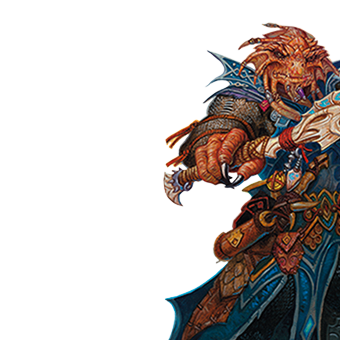
Dragonborn look very much like dragons standing erect in humanoid form, though they lack wings or a tail.
Dragonborn
They were one of the races native to an Elemental Plane, which then moved to Inner Planes.
Dragonborn exhibited many draconic features, including a scaly hide, a large muscular body, the capacity to use a breath weapon, and resistance to the same elemental energy they can breathe, thanks to their draconic heritage. Because of thousands of years of interbreeding, the scales a dragonborn wore were scarlet, gold, rust, ochre, bronze, or brown in hue, though a few dragonborn with an stronger draconic heritage had scales resembling those of true dragons. They live to be around 80.
Like dragons, dragonborn were often mistaken for reptiles, but were in fact warm-blooded draconic creatures. A rare, few individuals were born with tails, but this was seen as a deformity by the dragonborn.
Unknown in heritage, they were either created by Ehx to serve other dragons or created from Ehx's spilled blood when it fell in the battle between gods. Many dragonborns believe in Ehx.
They hatch from eggs and breed with other Dragonborns.
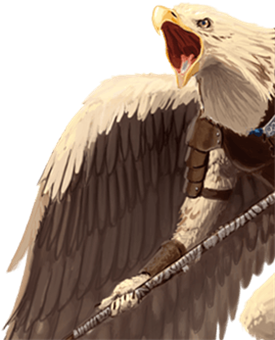
Sequestered in high mountains atop tall trees, the aarakocra, sometimes called birdfolk, evoke fear and wonder.
Aarakocra
From below, aarakocra look much like large birds. Only when they descend to roost on a branch or walk across the ground does their humanoid appearance reveal itself. Feathers cover their bodies. Their plumage typically denotes membership in a tribe. Males are brightly colored, with feathers of red, orange, or yellow. Females have more subdued colors, usually brown or gray. Their heads complete the avian appearance, being something like a parrot or eagle with distinct tribal variations.
Nowhere are the aarakocra more comfortable than in the sky. They can spend hours in the air, and some go as long as days, locking their wings in place and letting the thermals hold them aloft. In battle, they prove dynamic and acrobatic fliers, moving with remarkable speed and grace, diving to lash opponents with weapons or talons before turning and flying away.
Once airborne, an aarakocra leaves the sky with reluctance. On their native plane, they can fly for days or months, landing only to lay their eggs and feed their young before launching themselves back into the air. Those that make it to a world in the Material Plane find it a strange place. They sometimes forget or ignore vertical distances, and they have nothing but pity for those earthbound people forced to live and toil on the ground.
Aarakocra enjoy peace and solitude. Most of them have little interest in dealing with other peoples and less interest in spending time on the ground. For this reason, it takes an exceptional circumstance for an aarakocra to leave his or her tribe and undertake the adventurer's life.
They come from the Elemental Plane of Air and breed on a mating season with their race. An egg take about eight months to hatch and are incubated by females. This is the only exception that motivates them to land.
Aarakocra names have two to four syllables, punctuated with whistles, trills, and clicks that are difficult for non-aarakocra to pronounce. When dealing with non-aarakocra, they sometimes shorten their names, or use nicknames others give them.
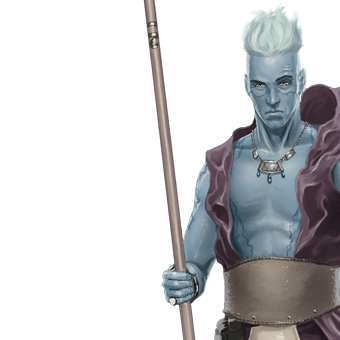
Genasi carry the power of the elemental planes of air, earth, fire, and water in their blood.
Genasi
They are planetouched humans and technically speaking are not a race but a general classification of humans with a link to an elemental plane, usually by a Genie.
Each of the four fundamental elements had associated genasi, so the most common genasi were air genasi, earth genasi, fire genasi, and water genasi. Para-genasi were genasi who expressed a bloodline of two elements. These included the dust para-genasi, ice para-genasi, magma para-genasi, ooze para-genasi, smoke para-genasi, steam para-genasi, among other possibilities. Para-genasi were even rarer than the four standard genasi.
No two genasi were alike in appearance. Some could pass as normal humans, bearing the marks of their human ethnicity. For others, their elemental nature was impossible to hide. Their heritage was nearly always evident in one or two physical traits, such as skin or hair color or an elemental aura.
A rare few genasi could control two elemental manifestations simultaneously. These powerful entities were known as elemental tempests.
Unlike many planetouched races, genasi generally took pride in their unusual features. Furthermore, because of their elemental power, most genasi felt a sense of superiority over other races and even over other genasi.
Genasi are created with a Magical Forge operated by Gods. Since Gods have left the forge alone, only Fire Genasis are seldomly able to survive the high heat. The child of an elemental creature with a human was a half-elemental. The child of a half-elemental and a human was a genasi. The child of a genasi and a human might show planetouched traits or purely human ones. Thus, overtime, the elemental bloodline was diluted until it was no longer obvious in most individuals. However, every few generations, a child might display his or her elemental heritage as a genasi. Para-genasi came about when a half-elemental of one type mated with an elemental creature of another type.
Genasi artisans often saw their craft as a means of obtaining prestige. These individuals desired nothing more than to be in high demand and so worked hard to please their customer base. For this reason, many genasi often substituted actual excellence for customization and individuality and while the average genasi swordsmith might not compare with his dwarven counterpart in terms of quality, the genasi would work much harder to tailor the blade to his or her customer's specific needs and wants. This could go so far as to make genasi-crafted items seem uncomfortable or unwieldy in the hands of those for whom they were not intended.
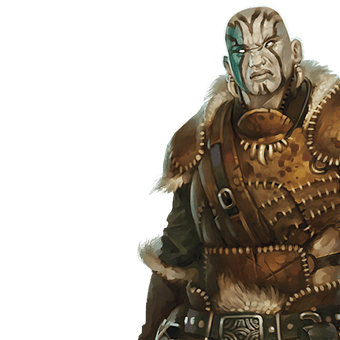
Strong and reclusive, every day brings a new challenge to a goliath.
Goliath
Goliaths were massive. They averaged between 2 to 2.5 meters, making them even taller than dragonborn and half-orcs. Goliath eyes were often a bright blue or green and sometimes glowed a little with an unusual supraorbital ridges. Their skin is often gray or brown and though, resembling stone, with black and vertically symmetrical patches covering their whole body. They believe that these markings somehow explain their fate or destiny. For this reason Goliaths never tattoo themselves.
Goliaths' most notable characteristic was their competitiveness. They kept track of their accomplishments and saw everything as a challenge. Those not familiar with goliath psychology would often get annoyed when goliaths constantly reminded them how many times a certain thing had happened, thinking them arrogant or self-centered. To them, score keeping is a natural part of life. Beating their own records was the most satisfying victory for a goliath. They were also competitive with their companions and other goliaths, but were never arrogant or cocky. Goliaths had little time for cheaters, gloaters, and sore losers.
It was rare for goliath adventurers to retire or live to an old age, as they often died trying to surpass their previous achievements. Permanently injured or aging goliaths often sought death in battle rather than succumb to an existence where they could not excel. This tradition of honor and trust meant that goliaths tended to be good overall. This combined with their competitive nature often led goliaths to valorous heroics. Goliaths were also notably daring and fearless. Feats of physical strength and agility, like jumping chasms or climbing cliffs, held no fear for goliaths.
Complacency was a trait that goliaths loathed and as a result they never took anything for granted. Even goliaths with magical advantages would continue to train their physical prowess in case they ever lost their power. Goliath tribes only went to war as a final option, preferring to move away from unsafe lands. They did not do this out of fear or cowardice, instead they were aware that loss of life in their tribe was undesirable and had long-term consequences.
Goliaths often employed guerrilla tactics in battle, owing to their upbringing as hunters. Fair-play was also integral to goliath fights. As long as they were fairly sure they could still win, goliaths would even handicap themselves to give their opponents a fair chance. For example, if a goliath disarmed their opponent, they would throw aside their own weapon and continue the fight with their fists.
Goliaths lived in small tribes that numbered between forty and sixty goliaths. This was usually made up of three to five extended families. Most goliaths lived in the same tribe their entire life. On rare occasions, a tribe that got too large would split into smaller tribes or smaller tribes would merge together. Their tribes have roles such as: Chieftain, Captain, Skywatcher, Dawncaller, Adjudicator, Tent-mother, Lamentor.
Tribe chieftains only maintained power as long as they could prove they were suitable for that role. As a result, leadership constantly changed. New leaders were chosen by contests. Any goliath could challenge the chieftain in an attempt to replace them. If this happened, the chieftain and the challenger competed in three tasks. The challenger had to win all three to become the new chieftain. The old chieftain would then leave the tribe permanently. Their camps are usually located on the mountains.
Although goliaths had no written laws or codes, there were a number of unspoken rules that were commonly followed by most goliath tribes, discouraging theft and cheating. The greatest rule was obedience to the chieftain and captains. Those were usually punished by beating, shunning or even exiling.
Goliaths had little empathy or pity for adults who couldn't take care of themselves but they would treat and take care of the injured and sick. Permanently injured goliaths were still expected to contribute in every way that they could. Arts and crafting in goliath culture were limited by the resources they had at hand in the mountains. As a result, goliaths were skilled in crafts like flintknapping, tanning, stitching, creating simple pottery, bone-carving, and painting. Art was one of the few things that goliaths understood to be non-competitive, they fully appreciated that art couldn't have a winner. Considering their competitive nature, it's not surprising that sports were often played by goliaths to improve their physical skills and pass time. Simple games included climbing, sprinting, and wrestling.
They spoke Gol-Kaa and it was around for over a toushand years. Gol-Kaa was spoken in the active voice almost exclusively. It was grammatically torturous to use passive voice. Over time, many Goliaths learned to speak Giant and Common.
Most goliath tribes revered nature and the primal forces. Goliath shamans were known as "skywatchers" or "sunspeakers". Despite this some goliaths did worship or honor gods.
Goliaths were friendly to anyone who didn't threaten their tribe, but wouldn't wait around for travelers who couldn't keep up with them. Goliaths were particularly fond of dwarves and had great respect for dwarven blacksmiths. Some goliaths would even venture into mountain tunnels to seek out dwarves. Human rangers or druids were known to sometimes work together with goliath tribes in hunts. Both the humans and goliaths could mutually benefit from these temporary alliances. Goliaths often referred to earth genasi as their "cousins". The two races maintained a friendly rivalry. Elves were somewhat intimidating to goliaths, owing to their long lifespans. Goliaths often struggled with the idea that creatures existed that were old enough to have known their great-grandparents and ancestors. Although they had no particular hatred of goblins, orcs, or half-orcs, goliaths were wary of them. This was mostly due to the stories that they heard from passing travelers about the trouble they caused. Attitudes towards giants varied.
Goliaths who ventured out of their tribes would often find issue with the class divisions found in other societies. Goliaths struggled with the idea that an incompetent king could rule over hard-working peasants. These opinions were often shared and goliaths would openly mock incapable leaders or rich nobleman who relied on social structures to maintain their power.
It's unclear how old the goliath race was or where they originally came from, but it was commonly believed that they were somehow related to stone giants or earth genasi.
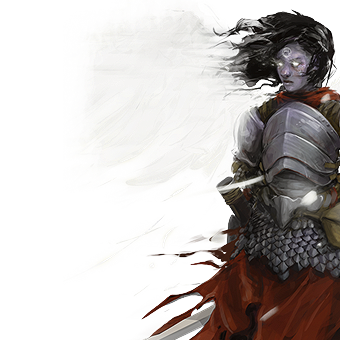
Aasimar are placed in the world to serve as guardians of law and good. Their patrons expect them to strike at evil, lead by example, and further the cause of justice.
Aasimar
Aasimars are descendants of celestial beings. They appear as glorious humans with lustrous hair, flawless skin and piercing eyes. They often attempt to pass as humans. Aasimars are celestial to humans as the opposite of tieflings as fiends to humans.
Early aasimars, now long gone, have become either demigods or lost to time. Now, Aasimars only produce with humans and spawn aasimars.

Shifters, sometimes called the weretouched, are humanoids with a bestial aspect.
Shifter
Shifters resembled humans, their close brethren, but with distinctively bestial features such as sharp teeth, claws, pointed ears, or fur. However, to a human's eye, the resemblance was less obvious than the differences. Unlike humans, shifters had flat, animal-like noses, larger than usual eyes that allowed them to see better in low light, heavy eyebrows, pointed ears, skin that was often of a brownish shade, and much more hair, also commonly brown, than was typical for the common human.
Shifters lived to about as long humans did on average. Shifters were commonly self-reliant and free-spirited. However, they were restrained in their actions by a fear that they might become lost in the savagery that dwelled in their blood. However, this feral predatory nature could be to the shifter's advantage, and they made excellent rangers or druids.
Shifters were often feared wherever they went, much like their lycanthrope ancestors. This was due to a common misconception that all lycanthropes were invariably and irreversibly evil, including shifters. Instead, shifters preferred either a nomadic lifestyle or living close to the edges of society, supporting it as fishers, trackers, hunters, guides, or scouts.
Shifters favored gods of nature, the moon, and primal strength. Just like lycanthropes, shifters could be found scattered throughout, but only a few gathered in larger communities.
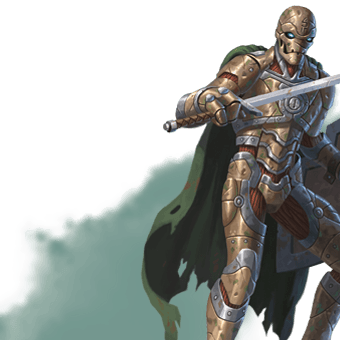
Warforged are made from wood and metal, but they can feel pain and emotion. Built as weapons, they must now find a purpose beyond war.
Warforged
Warforged were a rare race of humanoid constructs created through powerful rituals. They average 1.8 meters and weight about 140kg. Extremely powerful and durable, warforged were able fighters. Unlike most constructs, warforged were fully self-aware and maintained mental faculties on par with elves, humans, or similar races. The most important marking for any warforged was their "truth", a rune distinctive to each warforged which was placed upon their forehead.
They are sexless and incapable of reproduction. The warforged's artificial nature also gave the race a unique relationship to pain, which seemed limited to actual injury. This allowed warforged to modify themselves with some ease, giving them a varied appearance in spite of their lack of inherent biological diversity.
Warforged's artificial nature also meant they did not need to eat, drink, or breathe. Likewise, warforged did not need to sleep but did nonetheless require rest in a fully-aware state for a period of at least four hours.
Warforged took their name from their original purpose, as soldiers, and many had a dutiful attitude towards life, taking pleasure from fulfilling commands. Warforged as a whole had a strong work ethic and shared an aversion to failure. Warforged were capable of fear, often of death or pain, as much as other races and could come to hate the sources of these fears just as easily. Warforged were also capable of loyalty and joy, particularly in relations to friends and allies and could be driven to anger when their loves or goals were threatened. However, warforged as a whole exhibited a simple-minded and reserved approach to life with straightforward goals and reactionary passions.
Since warforged were created in a state of physical maturity, many exhibited a childlike perspective that was often mistaken as naïve or emotionally crippled; this was not necessarily true. Some warforged, in fact, developed a particularly sophisticated view of the world, ever curious about its mysteries in part due to the odd nature of their creation. Many wondered where they might go in death and if they even have souls. Some created deeply ordered philosophies to govern themselves or maintained a perpetual list of tasks to occupy themselves with. Others fell in with the religions and mindsets of other races. Some warforged even lived long enough to develop a deep and weathered personality as tempered by time as that of other races.
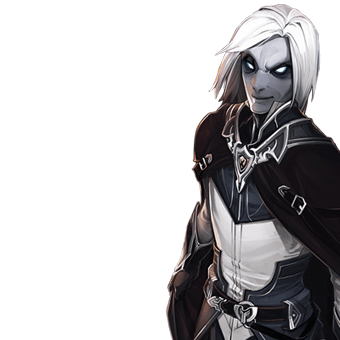
A changeling can shift its face and form with a thought as a form of artistic and emotional expression.
Changeling
Conjured by a magic item, the gift of the Traveler, Changelings were once human that have lost their faces. They are distantly descended from doppelgangers and share their shapeshifting qualities. They now walk with multiple faces that they can control the expression with.
Even though some are raised in stable communities, never knowing one like themselves, or some being raised in changeling clans, almost every changeling follow the unpredictable path of the traveller. Some Changelings conceal their true nature and never think twice while some embrace their nature. Having no culture of their own, changelings slip into other's societies and blend in.
While changelings can look like anyone at any given time, they do have a true form. Their natural look can be scary to some due to their lack of detail and distinctive features. Their skin tone is always pale, either white or light gray, and they tend to have slender bodies with limbs slightly longer in proportion to other humanoids.
Changelings have long been persecuted by other races, seen at best as tricksters and con-artists, at worst as thieves and assassins. Many people find it hard to trust changelings, and while their talents make them natural spies and criminals, in reality, a changeling is just as likely as any creature to turn to good or evil.
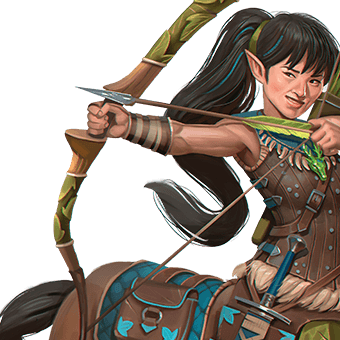
The upper bodies of centaurs are comparable to human torsos in size, and their lower equine bodies average about 4 feet tall at the withers. They fill similar roles as cavalry warriors, messengers, outriders, and scouts.
Centaur
Roamers at heart, they love open spaces and the freedom of travel. Their upper body is like of a human's, ears slightly pointed, face wider and squarer. Lower body resembles a horse with coats toward brown shades like chestnut or bay.
They generally live in tribal hunter-gatherer societies. They have good relations with elves, as they are both creatures of the forest. Their relations with elves are mutual, mostly trading gold and treasure from the tribe's horde for items in large supply in elven communities. Elves are welcome in centaur territory, and typically share land. Centaurs generally despise humans and dwarves.
They come from a blessing upon some humans on the ancient era given by Cyaxo. They mostly believe in Cyaxo.
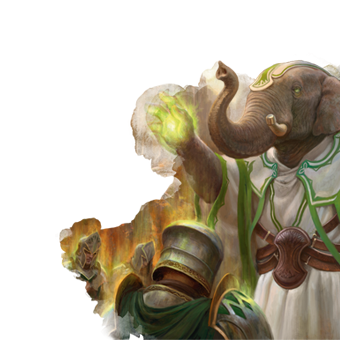
Humanoid elephants, loxodons are strong, calm, and wise.
Loxodon
Loxodons are a race of elephant humanoids. They are known as formidable warriors - they're tough as tanks, surprisingly quick on their feet, and tireless in battle. Loxodons' beliefs are straightforward, earnest and, above all, unswerving.
The world is a simple place to a loxodon. They speak in casual absolutes - right and wrong, virtue and depravity - leading some to wonder whether the loxodon mind can even perceive subtle shades of grey. Debate with a loxodon therefore borders on uselessness: their minds are made up quickly, and no amount of discussion will alter their path; and they will bring their full bulk and prowess in combat to uphold even a newly formed opinion. Matters of loxodon rules and religion, known collectively as the Modest Truth, are passed from generation to generation, and accepted with seemingly little deliberation.
Loxodons are naturally confident, almost naively so; they regard any challenge as an opportunity to test themselves, prevail, and prove their personal skill. Their inbuilt armament and natural ability with weapons gives them good odds against any threat, and leads to an almost unbreakable resolve toward challenges in general. Their plans and strategies toward these challenges can be simplistic at times; as they can't (or choose not to) see the intricacies and details of a problem that some other races perceive, loxodons tend to favor a head-on, even brute-force approach to succeed in any situation. Many loxodons go out of their way to seek out difficulty and strife, believing that any chance to test their will and virtue is a gift.
Despite their unwavering reliability, loxodons have elaborate measures of punishment for those who break the rules. First a ranking soldier or cleric dispenses a physical assault, overwhelming the violator with bodily pain; then a cleric or confessor hears the penitent's admission of guilt. This process works well among loxodons, ensuring a strict form of justice and guaranteeing consent on the Modest Truth, but other races often consider it barbaric or cruel.
Loxodons resolve most problems with physical might, but when the need for spellcraft arises, their magic is direct, unambiguous, and crushingly forceful. Their wizards and clerics dispense justice unapologetically and with overwhelming power, scouring the plane of any who are deemed evil, summoning enormous avatars of law and retribution, resurrecting entire armies from the dead. What loxodons lack in trickery, they make up for in raw strength.
The elephantine loxodons are tough as tanks, tireless as machines, and headstrong as boulders. They are irrepressibly confident, seeing almost every event in their lives either as positive or as a challenging opportunity to prove their mettle. The loxodons believe punishment comes in two steps: pain and atonement. They carry a weapon for each. Elder mystics take their vow of silence so seriously that they impose it on any who enter their presence.
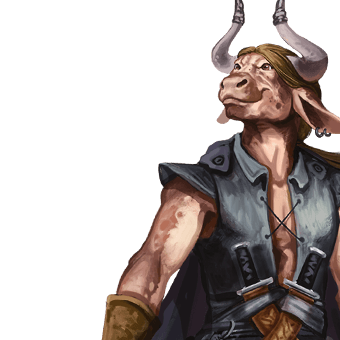
The minotaurs of Ravnica are strong in body, dedication, and courage. They are at home on the battlefield, willing to fight for their various causes..
Minotaur
Minotaurs were evil giant muscular humanoids with fur-covered bodies and bull-like heads. It was once believed that all minotaurs were male; actually cursed humans that had been altered by the gods or a demon lord to become a minotaur. That legend proved false as female minotaurs became more prevalent over the years.
Minotaurs were carnivores, but preferred the taste of human flesh. They loved to dwell within maze-like caverns or ruins, where their innate sense of direction prevented them from getting lost. They lured travelers into their maze-like homes, where the minotaurs had the advantage over their unfortunate prey.
Many minotaurs couldn't be trusted with non-minotaur races at times, since most humanoids were their meal, and they would do anything for a quick bite out of a sleeping party member, slave owner, or wandering villager. They were not welcomed in any cities, and received an immediate death sentence, or a stoning if caught. Or worse, they were hunted by multiple hunters seeking the thrill of giving the beasts a taste of their own medicine.
Minotaurs were not highly intelligent, but possessed instinctive cunning and were adept at ambush attacks. Attacks in the dark were preferred so they could take advantage of their infravision. Minotaurs could track by scent alone, and would always investigate an unfamiliar scent. Minotaurs were fearless combatants, and would only retreat if their defeat was obvious.
Many minotaurs worshiped the Underworld Lord and his servants and were not allowed in many cities because of this known factor. Most moved toward the chaotic evil alignment, and did not work well in groups, packs, or even parties due to their solo hunter-like nature.
Although rare and considered a barbaric people by the more civilized races, it is thought that at one time perhaps they may have been less so. A reasonably sized population can be found in the Underworld Plane of Nee.
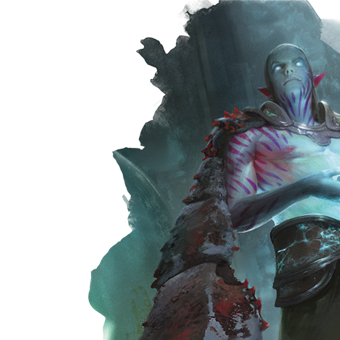
The Simic Combine uses magic to transfer the traits of animals into humans, elves, and vedalken.
Simic Hybrid
The Simic Combine uses magic to fuse different life forms together. In recent years, the Simic Combine has extended this research to humanoid subjects, magically transferring the traits of various animals into humans, elves, and vedalken. The goal of the Guardian Project is to build a Simic army of soldiers perfectly adapted to a variety of combat situations. These hyper-evolved specimens are called Simic hybrids, though they sometimes refer to themselves as guardians.
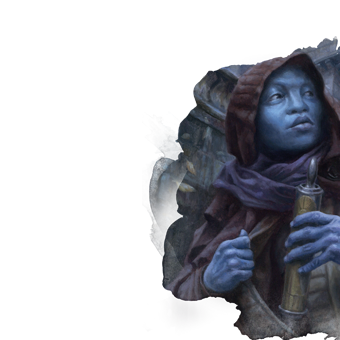
The blue-skinned vedalken strive for perfection above all else.
Vedalken
Nothing is perfect. Vedalken not only believe this fact, they rejoice in it. Every imperfection is a chance for improvement, and progress is an endless march toward a state of perfection that can never be reached. This viewpoint leads vedalken to pursue their work with delighted enthusiasm, never deterred by setbacks and excited by every opportunity for improvement.
Vedalken are tall and slender, standing almost a head taller than humans on average but weighing about the same. Their hairless skin comes in a range of shades of blue. Their eyes are darker shades of blue or violet. They lack external ears, their noses are broad and fiat, and they are partially amphibious.
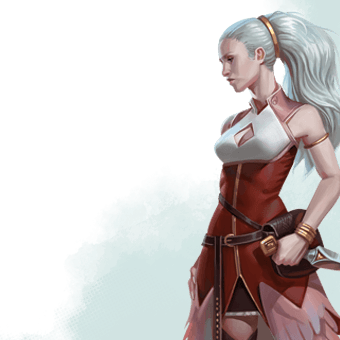
The kalashtar are a compound people created from the union of humanity and renegade spirits from the plane of dreams.
Kalashtar

Wisplings were planetouched, native outsiders descended from the breeding of halflings and demons.
Wispling
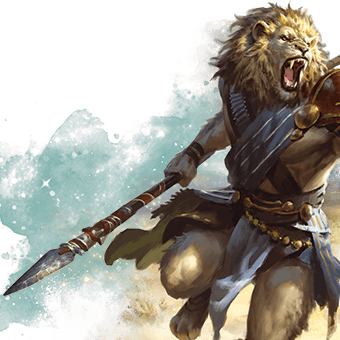
Nomadic, lion-like humanoids who rarely interact with other peoples, having all they need in their shimmering homeland.
Leonin
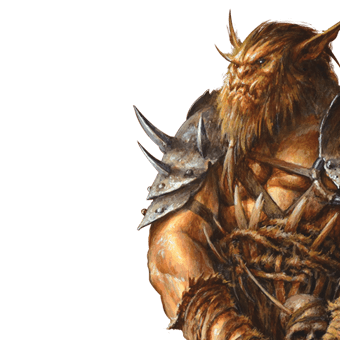
Bugbears feature in the nightmare tales of many races — great, hairy beasts that creep through the shadows as quiet as cats.
Bugbear
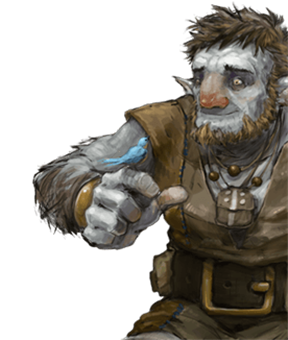
Firbolg tribes cloister in remote forest strongholds, preferring to spend their days in quiet harmony with the woods.
Firbolg
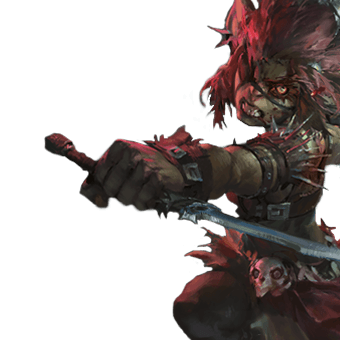
Goblins occupy an uneasy place in a dangerous world, and they react by lashing out at any creatures they believe they can bully.
Goblin
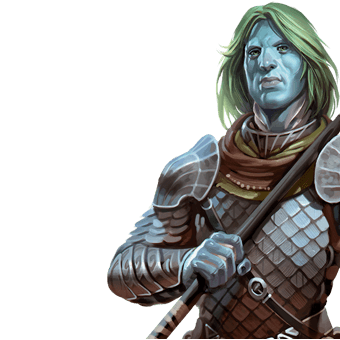
Long-established guardians of the deep ocean floor, in recent years the noble tritons have become increasingly active in the world above.
Triton
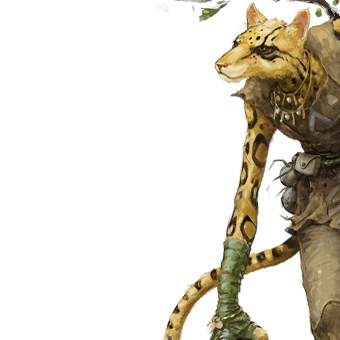
Hailing from a strange and distant land, wandering tabaxi are catlike humanoids driven by curiosity to collect interesting artifacts, gather tales and stories, and lay eyes on all the world's wonders.
Tabaxi
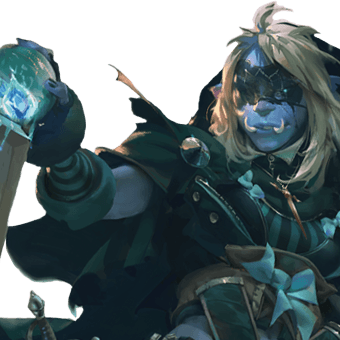
Orcs live a life that has no place for weakness, and every warrior must be strong enough to take what is needed by force.
Orc
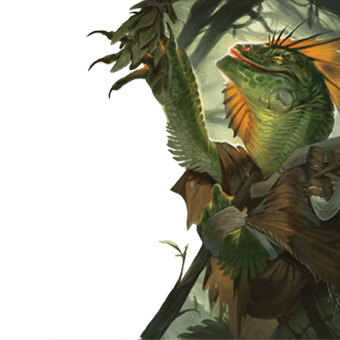
Lizardfolk possess an alien and inscrutable mindset, their desires and thoughts driven by a different set of basic principles than those of warm-blooded creatures.
Lizardfolk

Kobolds are typically timid and shy away from conflict, but they are dangerous and vicious if cornered.
Kobold
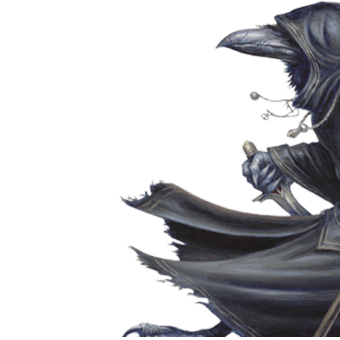
Haunted by an ancient crime that robbed them of their wings, the kenku wander the world as vagabonds and burglars who live at the edge of human society.
Kenku
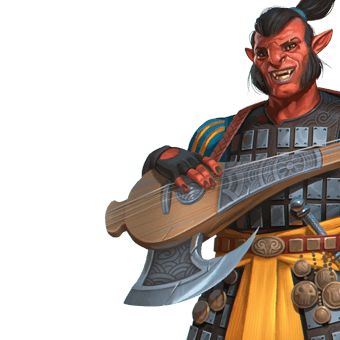
War is the lifeblood of hobgoblins. Its glories are the dreams that inspire them. Its horrors don't feature in their nightmares.
Hobgoblin
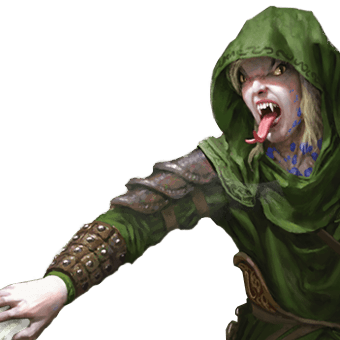
The serpent creatures known as yuan-ti are all that remains of an ancient, decadent human empire.
Yuan-ti Pureblood
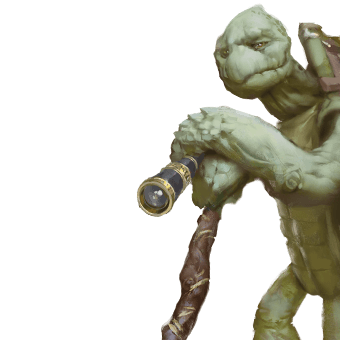
What many tortles consider a simple life, others might call a life of adventure. They are nomad survivalists eager to explore the wilderness.
Tortle
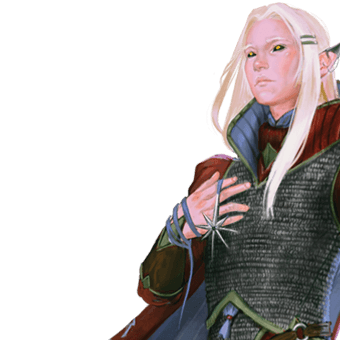
Read the relevant book.
Astral Elf
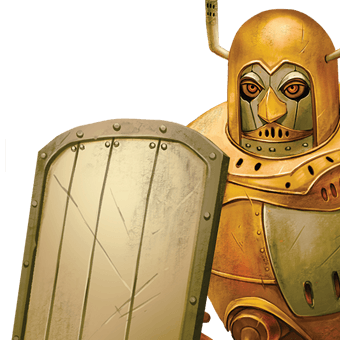
Read the relevant book.
Autognome
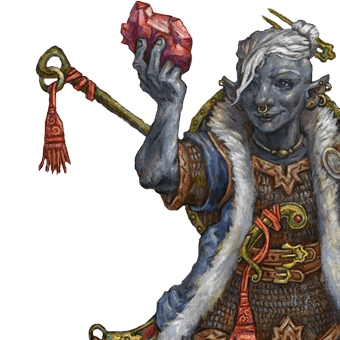
Read the relevant book.
Deep Gnome
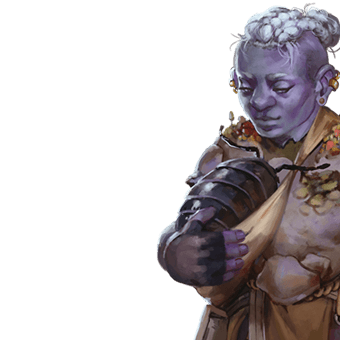
Read the relevant book.
Duergar
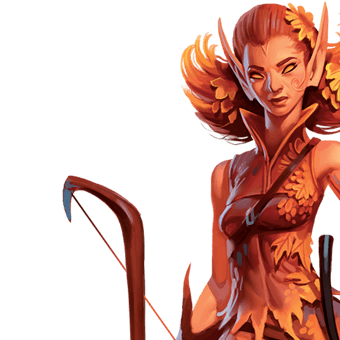
Read the relevant book.
Eladrin
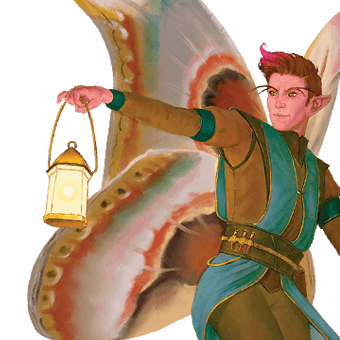
Read the relevant book.
Fairy
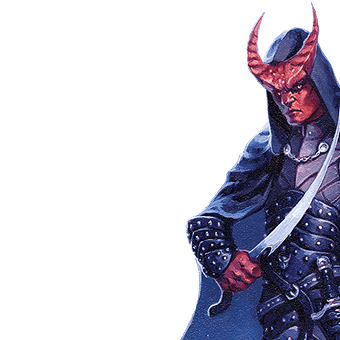
Read the relevant book.
Feral Tiefling
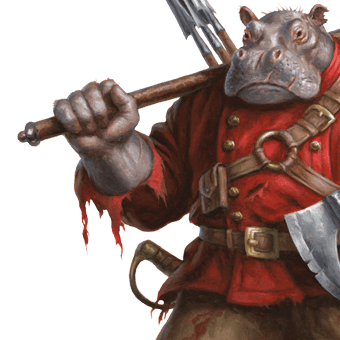
Read the relevant book.
Giff
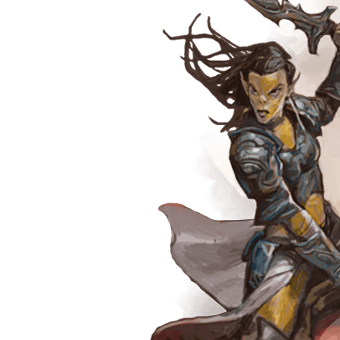
Read the relevant book.
Githyanki
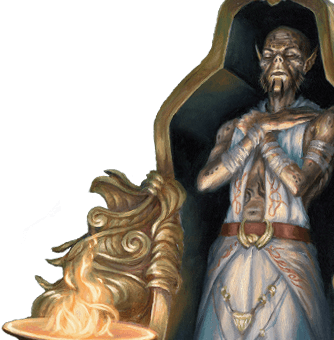
Read the relevant book.
Githzerai
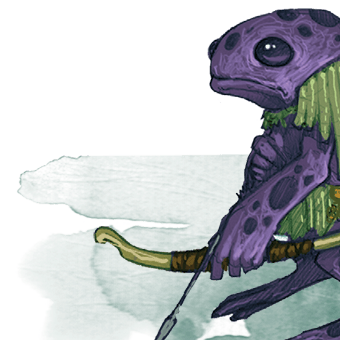
Read the relevant book.
Grung
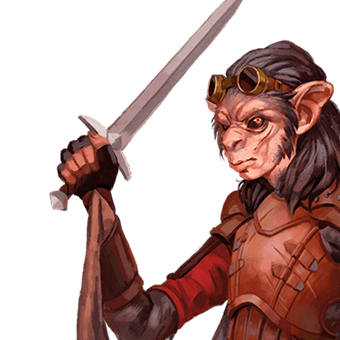
Read the relevant book.
Hadozee
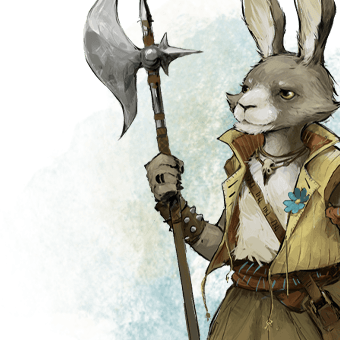
Read the relevant book.
Harengon
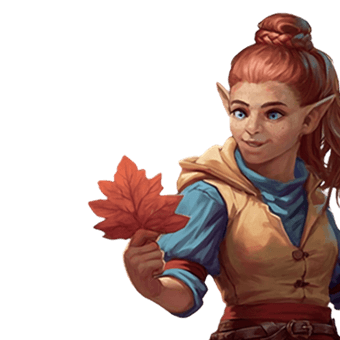
Read the relevant book.
Kender
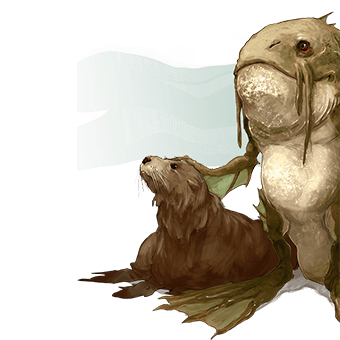
Read the relevant book.
Locathah
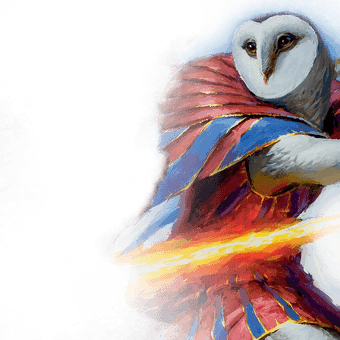
Read the relevant book.
Owlin
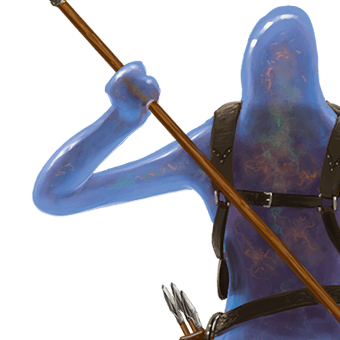
Read the relevant book.
Plasmoid
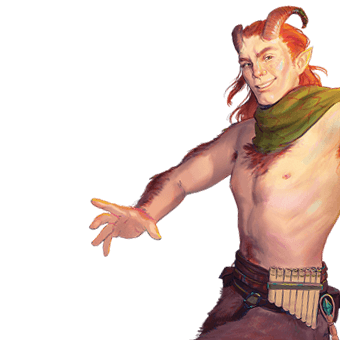
Read the relevant book.
Satyr
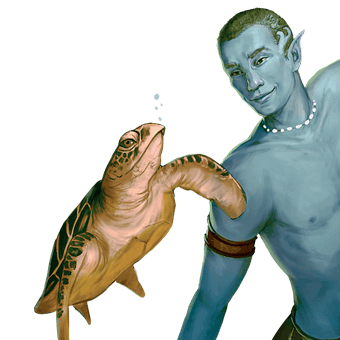
Read the relevant book.
Sea Elf

Read the relevant book.
Shadar-Kai
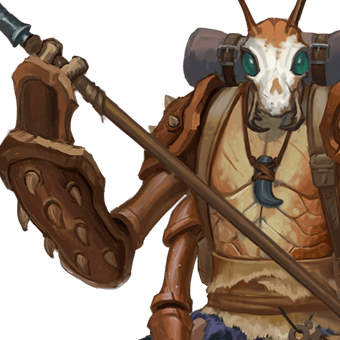
Read the relevant book.
Thri Kreen
Almost infinite more...
There are a lot of races released officially, and we have the option to homebrew. If you want to play something that does not exist, let me know!